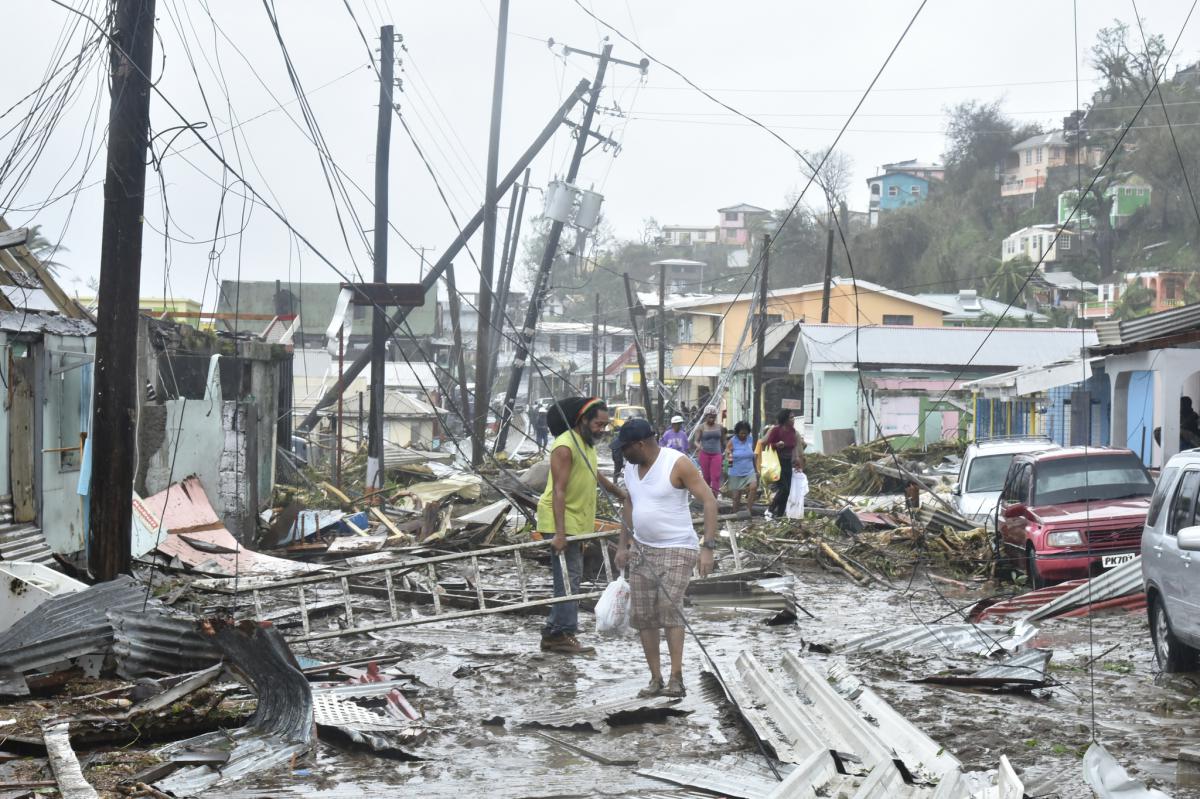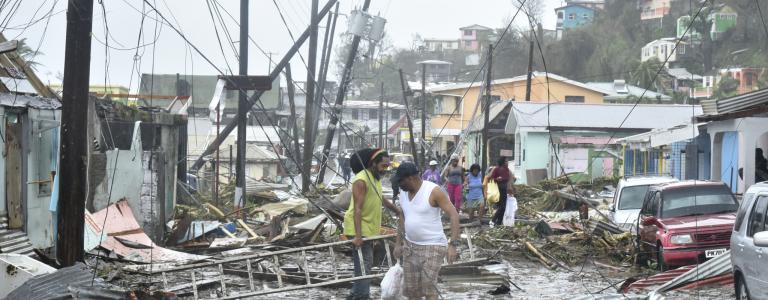Adaptation Urgent as Climate Change Impacts Proliferate
In the 1990s and into the early 2000s, there was debate about whether there was a need to talk about climate change adaptation.
In the 1990s and into the early 2000s, there was debate about whether there was a need to talk about climate change adaptation.
Mitigation, many argued, needed the lion’s share of the attention; if the worst effects of climate change could be prevented, extensive adaptation wouldn’t be necessary. Moreover, the benefits of adaptation are only experienced locally, while mitigation addresses a global problem.
Ignoring the need to adapt to climate change is no longer an option. Mitigation and adaptation are two sides of the same coin, and both are critical. Our past emissions have already locked in an irreversible increase in our global temperature, and we are already seeing climate change increase the intensity and severity of extreme weather events as science has warned.

Roseau, Dominica, the morning after Hurricane Maria struck. Photo: Roosevelt Skerrit/Flickr
Over the past decade, many cities and communities have scaled up their efforts to prepare for climate change. In some cases, this action has been spurred by extreme weather events, such as New York City’s response following Hurricane Sandy. Many national and subnational governments have taken action to prepare key sectors like farming and water, and are now raising their ambition through national adaptation planning (NAP) processes.
But as the recent spate of natural disasters—Hurricanes Harvey, Irma and Maria in the Atlantic; the South Asian flood crisis that affected millions this summer; floods in African countries that killed at least 1,240 people in August; the British Columbia wildfires here in Canada—have demonstrated, no region, no sector and no community is ready yet for climate change.
In addition to making investments in hard infrastructure that can withstand a more variable climate and extreme weather events, we also need to recognize the value of natural infrastructure to help absorb climate change impacts. For example, one recent analysis estimated that mangroves in the Philippines helped prevent USD 1 billion in climate-related damages annually. In addition to investing in new infrastructure, we will also need to preserve the ecosystems that already help reduce climate risk.
Some of the most innovative adaptive strategies are being developed by countries that are most vulnerable. After Hurricane Ivan damaged 89 per cent of buildings in Grenada in 2004, they dedicated their country to a "build back better" approach, designing houses to withstand high winds and becoming one of the first Caribbean countries to tackle the NAP process.
IISD has had the privilege of working with policy-makers and sector experts for many years to mainstream climate change adaptation planning and action. Recently, we examined adaptation action in 15 African and Asian countries, prepared an extensive menu of municipal adaptive options in the Building a Climate-Resilient City discussion paper series for Calgary and Edmonton, and continue to support adaptation planners from developing countries to develop and implement NAP processes.
What adaptation looks like on the ground will depend on local context, but regardless of where one is, the process for making decisions about how to adapt can often look the same. The Canadian Prairies and the Philippines may have very different adaptation needs, but they both are putting an economic value on natural assets’ ecosystem services. While the economic value of mangroves in the Philippines is being assessed, so too is the crucial role that wetlands in the Canadian Prairies play in reducing climate change impacts such as flooding by absorbing and temporarily storing a significant amount of water.
It is vital to recognize the economic value of these ecosystem services, and the financial loss if natural assets are destroyed. We should also consider investing in climate change adaptation strategies that have the added co-benefit of enhancing ecosystem services, such as distributed water harvesting.
At the national policy level, through the NAP Global Network, we have seen countries with circumstances as different as Albania and Grenada exchange lessons on how to finance adaptation actions that they have prioritized.
Recent natural disasters serve as a reminder of the urgency with which climate adaptation is needed. The challenge is immense, but there is a wide array of actions that governments at all levels and individuals can take to make progress on preparing for our changing climate.
Recognizing that adaptation is as urgent as mitigation is an important first step.
To learn more about IISD’s work on climate change adaptation, please see our recent review of adaptation action in 15 Asian and African countries or download the ADAPTool, which assesses the adaptability of policies or programs in relation to stressors like climate change.
You might also be interested in
IISD's Best of 2024: Articles
As 2024 draws to a close, we revisit our most read IISD articles of the year.
Sustainable Asset Valuation of the Nutrition Sensitive Agriculture Capacity Strengthening Project in Ethiopia
This report analyzes the social, economic, and environmental outcomes of implementing agroforestry and climate-smart agriculture in Ethiopia.
COP 29 Outcome Moves Needle on Finance
In the last hours of negotiations, concerted pressure from the most vulnerable developing countries resulted in an improved outcome on the finance target, with a decision to set a goal of at least USD 300 billion per year by 2035 for developing countries to advance their climate action.
What Is the NAP Assessment at COP 29, and Why Does It Matter?
At the 29th UN Climate Change Conference (COP 29) in Baku, countries will assess their progress in formulating and implementing their National Adaptation Plans. IISD’s adaptation experts Orville Grey and Jeffrey Qi explain what that means, and what’s at stake.
